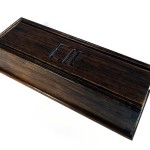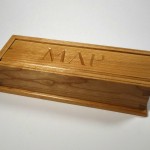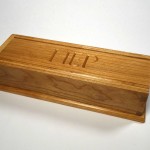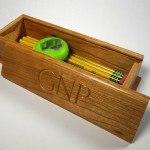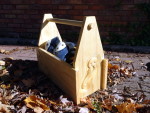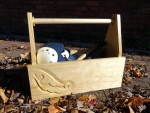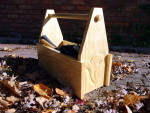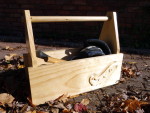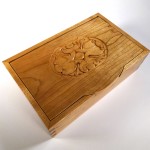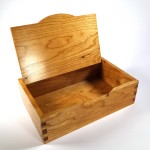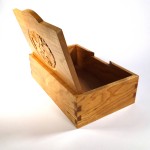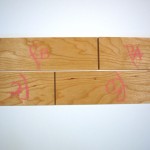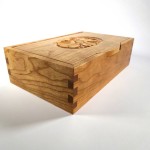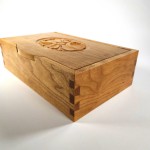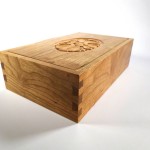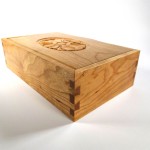The months leading to Christmas have extra security around the shop. Guards are posted to prevent word getting out about possible gifts being created within. Blogging is ignored. All of the gifts made it out in plenty of time, but the blog didn’t write itself, and the wimpy guards wouldn’t write anything, heading for warmer regions the moment this winter’s cold arrived.
I did take a few photos, but am not excited with them. Dark Walnut needs a lot of light to photograph well. I don’t know whether these photos suffer from my capability, getting used to a new camera, or the dearth of real light bulbs.
One might surmise from what I show here that there are four grandchildren, each having 3 parts to their names, one family liking lighter color wood and another liking darker wood. Correct. Each of the grandchildren now have a pencil box, either of Cherry or Walnut, and each supplied with “The World’s Best Pencils” and a sharpener. Each of those boxes uses standard pencil box construction, simple dovetails, sliding lid, solid base.
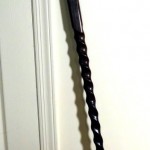 A young woman in our family puts up with a very strange nervous system malady and sometimes appreciates assistance when walking. I thought she needed something better than the mass-produced piece of aluminum tubing she has been using. The walking staff is dual purpose, long for use as a staff, and with a handle for use as a cane. The twisty part is a double helix, similar to one of the symbols of her profession.
A young woman in our family puts up with a very strange nervous system malady and sometimes appreciates assistance when walking. I thought she needed something better than the mass-produced piece of aluminum tubing she has been using. The walking staff is dual purpose, long for use as a staff, and with a handle for use as a cane. The twisty part is a double helix, similar to one of the symbols of her profession.
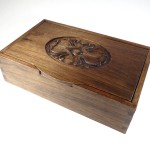 The oval rose is one of my favorite classical carvings. I’ve made several of these carvings. The box with the oval rose is about 9″ by 6″ by 2 3/4″ high. The lid is a flip up lid which will stand open at just a bit beyond 90 degrees. No pencils in that box. It traveled with a load of cookies.
The oval rose is one of my favorite classical carvings. I’ve made several of these carvings. The box with the oval rose is about 9″ by 6″ by 2 3/4″ high. The lid is a flip up lid which will stand open at just a bit beyond 90 degrees. No pencils in that box. It traveled with a load of cookies.
Finish on all of the boxes is shellac and wax. All of the Walnut items have additional dark stain, Min-Wax Jacobean. The walking staff has a polyurethane finish, better for exterior use.
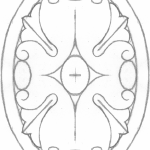 UPDATE: In response to Shannon’s comment, I’ve attached the pattern for the oval rose, both as an image and as a PDF. The pattern is free. The carving sequence is an exercise for the carver. 🙂
UPDATE: In response to Shannon’s comment, I’ve attached the pattern for the oval rose, both as an image and as a PDF. The pattern is free. The carving sequence is an exercise for the carver. 🙂
… and for hints on how to transfer complicated patterns, see the “Ponce on That” section of a recent post.
